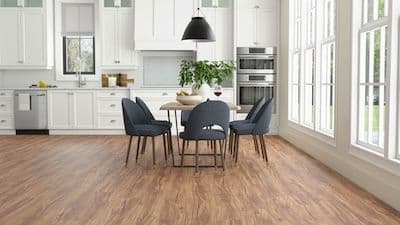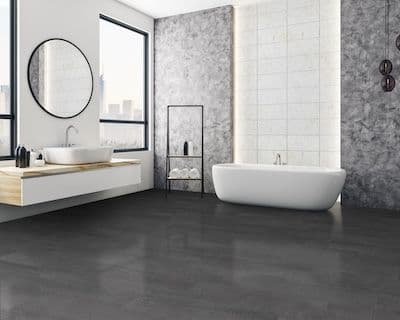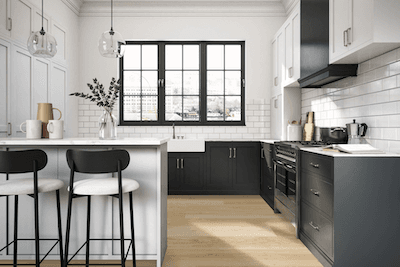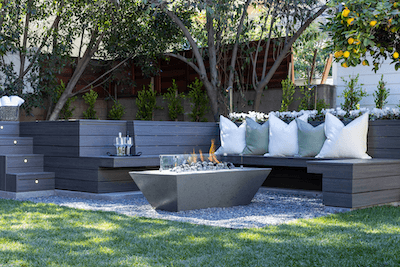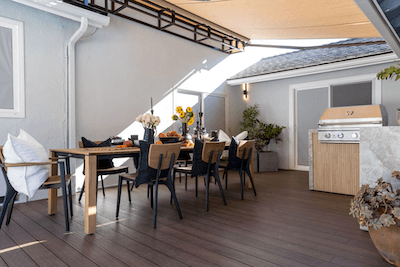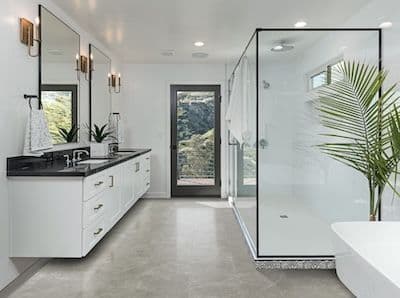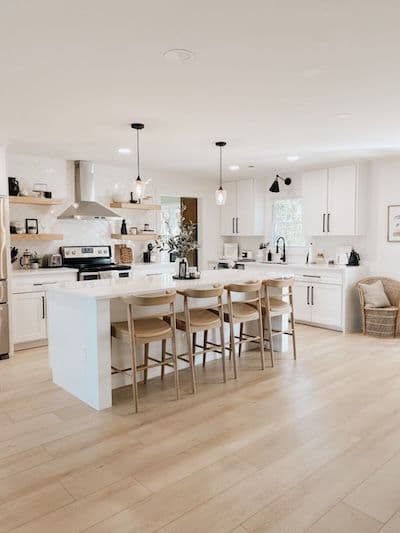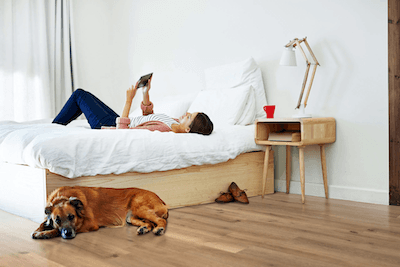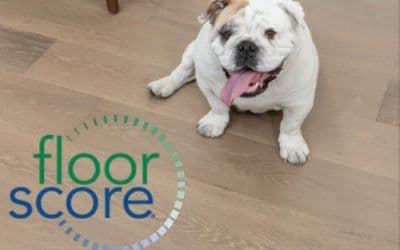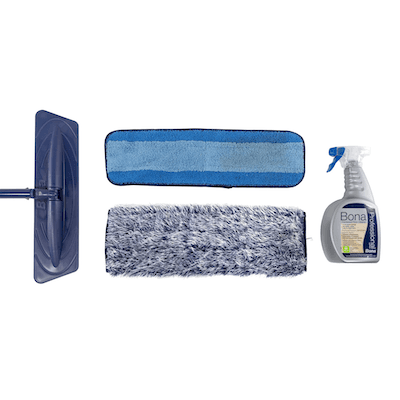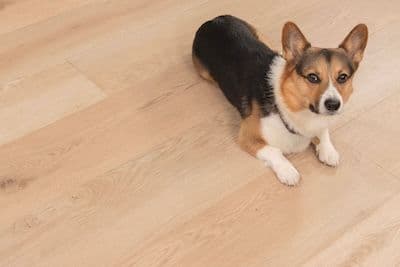Is Engineered Flooring Right For Your Home?

Is Engineered Flooring Right For Your Home?
Featured: CALI GeoWood in Antique Iron
If you are considering replacing floors anywhere in your home, it’s important to find the best flooring material for your situation. With the right flooring material, you can increase the beauty, value, and comfort of your home. Selecting the wrong flooring material for a room can lead to a variety of challenges. Often, engineered hardwood flooring can be a versatile, long-lasting, durable, and beautiful addition to your home. When and where should you use engineered hardwood flooring in your home? To answer this question, there are a few things you’ll need to know.
What is Engineered Flooring?
Engineered flooring is a type of flooring plank constructed using layers of hardwood. The top layer is often a high-end, attractive hardwood, while lower layers are comprised of plywood or other more readily available timber. CALI has a variety of non-toxic, sustainable engineered flooring products to meet your needs.
For more details visit our “What is Engineered Hardwood Flooring?” page.

Pros & Cons of Engineered Flooring
Here’s a breakdown of the benefits and drawbacks of using engineered hardwood floors:
| Pros | Cons |
|---|---|
| Humidity and moisture resistant | Similar price to solid (no big savings) |
| Versatile installation options | Not 100% waterproof |
| Increase home value | Contains more adhesives than solid flooring |
| Ultra Low-VOC | |
| Can be refinished |
Engineered Hardwood Pros:
- Humidity & Moisture Resistant
- Thanks to their layered construction, engineered floors have increased dimensional stability that helps them resist humidity and moisture. This makes them a viable option for bathrooms or kitchens.
- Multiple Installation Options
- Engineered flooring can be nailed, glued down or floated, and can even come with click-lock milling for easier installation. It can also be installed over a concrete basement subfloor. This variety of installation options gives you some flexibility in the case of any minor obstacles.
- Increase Home Value
- The housing market does not make a distinction between solid hardwood and engineered wood when considering the value of your home, so you don’t have to spend time splitting hairs on your investment.
- Ultra Low-VOC
- CALI Flooring is safe for everyone, including pets! All CALI engineered flooring tests 50x less than the strictest California Air Resources Board (CARB) Phase 2 Standards (0.05PPM) for VOC emissions. Learn more about our commitment to Low-VOC Non-Toxic Flooring.
- Can Be Refinished
- Thanks to a 13-coat protective finish, CALI’s high quality engineered flooring is unlikely to ever need refinishing. However, should you choose to refinish your CALI engineered floors, our engineered hardwood flooring is topped with an extra-thick wear layer that makes future refinishing possible. Just note that engineered planks can only be refinished 2-3 times before their durability is affected.
Engineered Hardwood Cons:
- Similar Price to Solid Wood
- Although it’s cheaper than tile, engineered wood and solid wood are comparably priced. You’re not going to get a bargain choosing one over the other. If it’s a bargain you’re looking for, other materials GeoWood and Cali Vinyl may be a better fit.
- Not 100% Waterproof
- Engineered flooring can stand up to changes in humidity, and simple spills won’t ruin your floor if wiped up promptly. However, no hardwood planks are 100% waterproof, whether they are solid or engineered.
- Contains More Adhesives
- While our engineered floors test well below even the strictest VOC emissions standards, there are more non-natural materials, such as glues and adhesives, found in engineered flooring as compared to solid floors. More so than with solid flooring, it is important that homeowners confirm an engineered floor is safe and either passes indoor air quality certifications such as GreenGuard® or FloorScore® or that certified emissions test results can be provided by the manufacturer.
Engineered Floors vs. Solid Hardwood Floors
This is a common comparison that most of us will make when researching types of wood flooring materials. There are a few important differences to consider when choosing between engineered hardwood and solid wood flooring:
| Engineered Wood | Solid Wood |
|---|---|
| Wear layer | Solid |
| Can be refinished 0-2 times | Can be refinished 2-4 times |
| More susceptible to denting | Less susceptible to denting |
| Basement-safe | Not basement-safe |
From this comparison, you’ll notice that solid wood flooring does not have a wear layer like engineered flooring. Finishes aside, you could, in theory, wear a solid floor down to the subfloor before replacement is required whereas engineered floors have a finite amount of material known as the wear layer or beauty veneer that can range in thickness from 1.2mm to 4mm. This wear layer also limits the amount of times an engineered floor can be refinished. Floors with a wear layer under 2mm should never be refinished while thicker wear layers may only be able to be refinished once or possibly twice. Compare this to solid flooring which can be professionally refinished up to four times in its lifespan.
Because engineered flooring contains less hardwood, it is typically softer and more susceptible to denting when compared to solid flooring. Although alluring, solid wood flooring should be avoided for use in basements due to moisture risks. So, for homeowners looking for added stability, water resistance, and peace of mind, engineered flooring is worth considering.

When is Engineered Flooring the best choice?
Engineered hardwood flooring is the best choice in any room where you want the look and feel of solid hardwood with the added benefits of improved moisture tolerance for both above and below-grade applications. Engineered flooring is easier to install if you are planning to nail-down and is compatible with many varieties of commonly available nail guns and staplers. Plus, it’s easy to clean! Cleaning an engineered wood floor is as simple as using a gentle microfiber hardwood floor pad and Bona Pro Hardwood Floor Cleaner. In which room are you considering installing engineered flooring? Here are some room-specific considerations:
Is Engineered Flooring expensive compared to other flooring materials?
We’ve covered a lot of information, but what about the price of engineered hardwood? If you’re on a budget, you’ll be happy to know that engineered flooring is not the most expensive option on the market. However, it’s not the cheapest, either. Engineered hardwood flooring is usually less expensive than tile and priced similarly to solid hardwood flooring. Other types of flooring materials like vinyl, carpet, and laminate are generally less expensive to purchase and install, but may not provide the look you want. See the table below to compare the price range of different flooring materials.
| Material | Material Cost / Sq. Ft | Installation Cost / Sq. Ft | Total Cost / Sq. Ft |
|---|---|---|---|
| Solid Wood | $5-15 | $1-7 | $6-22 |
| Engineered | $5-15 | $1-7 | $6-22 |
| Vinyl | $1-15 | $2-5 | $3-10 |
| Linoleum | $1-5 | $2-5 | $3-10 |
| Laminate | $1-6 | $2-5 | $3-11 |
| Concrete | $2-8 | $2-15 | $4-23 |
| Carpet | $2-7 | $2-4 | $4-11 |
| Tile | $5-20 | $5-8 | $10-30 |










